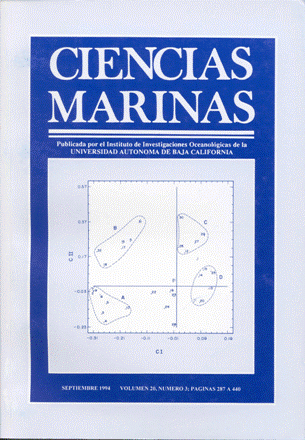Breezes during some months of spring and summer in the northwest of the Gulf of California
Main Article Content
Abstract
Surface wind data measured in San Felipe, B.C., during some months in the summer of 1984 and spring of 1987 are analyzed and described. The relative importance of the breeze system in relation to the synoptic field is established, specially during the summer. Monthly hodographic representation in the time domain permits the study of the breeze system, provides information on the average wind direction and speed for each hour of the day, and presents seasonal events. Typical days from some of the months are represented, which constitute one of the first contributions to describe the phenomenon in this region. The rotary spectra in the frequency domain permit us to state that during the 1984 period of measurement, the diurna1 band explains 57% of the total spectral energy, while during 1987, the diurna1 and synoptic bands explain 35 and 31%, respectively. The synoptic events in each period of measurement can also be observed in the filtered time series. They demonstrate that when winds stronger than 5 m/s are present and persist in direction longer than one day, the breeze system is interrupted making the land breeze disappear. The first two months of the 1987 spring period of measurement still reflect winter conditions as described by severa1 authors. This study suggests that the transition period is reduced to May and June only.
Downloads
Article Details
This is an open access article distributed under a Creative Commons Attribution 4.0 License, which allows you to share and adapt the work, as long as you give appropriate credit to the original author(s) and the source, provide a link to the Creative Commons license, and indicate if changes were made. Figures, tables and other elements in the article are included in the article’s CC BY 4.0 license, unless otherwise indicated. The journal title is protected by copyrights and not subject to this license. Full license deed can be viewed here.

